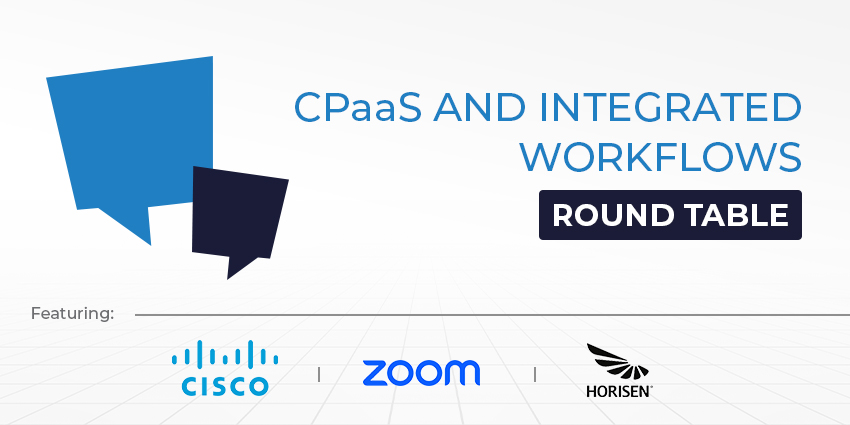1. What challenges are there in persuading customers to move to cloud-based solutions?
Severine Hierso, Director of Product Marketing at RingCentral: “Larger enterprise customers may encounter a number of challenges when considering a move from on-premise to cloud solutions.
“Large enterprises with thousands of seats and multiple locations usually consider a multi-year, phased approach for their shift to the cloud due to the complexity of the transition.
“Companies may find themselves in the middle of multi-year contracts with their Carriers that would involve early-termination fees.
“Multinational enterprises may operate in countries where cloud telephony is not available, thus justifying the need to rely on local Carriers.
“The sensitive nature of business communication is a critical focus for security teams and can be a concern when moving to the cloud.
“Cloud solutions with a BYOC offering can address these challenges and offer a personalised path to the cloud while providing a high-security level, managed by the provider.”
Lauren Brockman, Director of Product Management, UC at Bandwidth: “Modern enterprises know creating a winning brand experience that drives more engagement and loyalty requires rich communications capabilities only the cloud can deliver.
“But there’s no elevator service to the cloud. Complex on-premises gear, third-party integrations and multiple carrier relationships are just a few of the barriers to migration. The wider the geographic footprint, the bigger the challenge.
“The solution? Enterprises need confidence their telecomplexity can be solved. CPaaS providers must show they can map a smooth journey to the cloud with three proven capabilities:
“First, a cloud-native platform serving as a one-stop shop for voice, messaging and emergency services–without requiring the customer to have specialized telecom knowledge.
“Second, a cloud-native network able to deliver rich data and analytics to ensure optimum user experiences in the countries that matter.
“Third, the ecosystem of partners and applications (UCaaS and CCaaS platforms, AI and machine learning tooling) that easily integrate with the entire platform for a future-proof solution.”
Girish Dharmaraj, Head of Product at Toku: “There’s a sunk cost fallacy for a lot of IT departments that have already heavily invested both time and money in on-premise equipment.
“You need only look at the developments that have happened in the last few years to see that cloud-based technology isn’t going away and, in the long run, will likely have bigger developments and cost savings.
“In its infancy, cloud-based technology was seen as not secure or provide limited control. With modern cloud-based technology, this is simply not the case.
“You can have more control over your setup and scale effectively whilst baring less responsibility for hardware failures and redundancy.”
“A lot of customers worry that certain integrations may not work with a cloud setup, without realising that integrations are now a key benefit of cloud over on-premise technology.”
2. How can companies differentiate their cloud calling and BYOC offerings?
Severine Hierso, Director of Product Marketing at RingCentral: “Offering flexibility to enterprises enables companies to migrate to the cloud at their own pace. By combining current carrier services and cloud solutions, companies can migrate in a phased approach and maintain full control of their tech stack.
“The cloud provider should manage security, service delivery, and architecture as well as industry compliance. RingCentral is SOC 2, SOC 3, GDPR and HIPPA compliant and received dozens of globally-recognized security certifications, including UK Cyber Essentials Plus and HITRUST.
“To enable global companies to make the most of their cloud telephony system, the provider should offer native PSTN globally. In regions where it is not available, the company can still rely on their relationship with a local carrier.”
Lauren Brockman, Director of Product Management, UC at Bandwidth: “Customers want options in their cloud communications solutions.
“The enterprise move to the cloud is the best solution for most enterprises, but each customer has different needs and use cases. That’s why the most successful vendors will differentiate by offering choice and flexibility.
“For example, enterprises may want to select from a calling plan or go 100 per cent bring-your-own carrier (BYOC), depending on the level of control they need and the size of their implementation. Vendors may differentiate between the two by showing how each option best fits a customer use case.
“With the convergence of the customer experience and the employee experience, enterprises increasingly want the same provider to power both their unified communications and contact centre.
“Again, the right provider can break down silos and enable communications convergence to increase productivity and create a better total experience.
“Finally, vendors can differentiate by demonstrating how their solution offers not just choice, but also scalability, resilience (with measurable SLAs to instil confidence) and solves overall complexity.”
Girish Dharmaraj, Head of Product at Toku: “Companies need to focus on value; the value cloud calling and BYOC brings their customers and their end users.
“For companies creating their own product, this means increased control of their call routing without the hassle of dealing with telco infrastructure. And for end users, they’re getting better call quality and connectivity in more markets. It’s really a win-win.
“There also needs to be more focus on educating the audience. In order to see the real value of BYOC and cloud-calling, there needs to be a certain level of knowledge of the base technology and the benefits you get from controlling who you work with using BYOC.
“This takes time, but it’s an important step to make if there is to be a clear differentiating factor for these kinds of offerings.”
3. How do you see cloud calling and BYOC solutions evolving in the future?
Severine Hierso, Director of Product Marketing at RingCentral: “With cloud telephony, business phones become accessible from any device. Advanced features (call-forwarding, head-up display, admin tools…), that used to be exclusively available on desk phones are now rolled out on mobile, helping teams adapt to hybrid work.
“With fewer latency issues, 5G will improve the quality of audio calls. But it also goes beyond just voice: thanks to its high speed, users will have a better experience on business applications relying on 5G.
“Leveraging AI for voice communications improves companies’ efficiency in multiple ways. For example, sentiment analysis can unlock insights from voice calls to improve the performance of customer service teams or help them get to know customers better. For unified communications, AI can be used to provide meeting summaries, helping employees save time and reduce meeting fatigue.”
Lauren Brockman, Director of Product Management, UC at Bandwidth: “As cloud calling and BYOC adoption continue to grow, and solutions become more flexible and user-friendly, it will become simpler for enterprise customers to switch between calling plans and their choice of carrier.
“But each platform is different, and enterprises need to integrate with multiple UCaaS, CCaaS, and AI/Bot applications to orchestrate call flows among them. This is one of the biggest challenges in the cloud and one we are seeing more and more often.
“Just as we’ve seen in other verticals when switching is easy, factors like the breadth of offerings, quality of customer service and level of reliability become paramount. The vendors of choice in the future will be the ones who deliver more total value to customers.
“This means not just providing a service but also solving problems, enabling revenue growth, giving access to a larger ecosystem, increasing customer satisfaction and yielding greater overall ROI.”
Girish Dharmaraj, Head of Product at Toku: “I think it’s clear to most in the cloud communications space that a more open global ecosystem is on the horizon.
“Platform and network integrability are clearly becoming the norm as the demand from customers increases, BYOC and cloud calling are a big part of that.
“It’s also important to point out the increased levels of security that providers are beginning to bring to the table. Undertakings like AB handshake, KYC, and STIR/SHAKEN are a start, but in order to protect our end-users and our business the whole cloud-calling ecosystem will need to work together to evolve and prevent fraud so we can create a more secure telco marketplace.
“Overall, customers want to see more control over their communications, how they function, their levels of security, and which providers they partner with. This is what will ultimately drive the changes we’ll see with cloud-calling/BYOC.”







